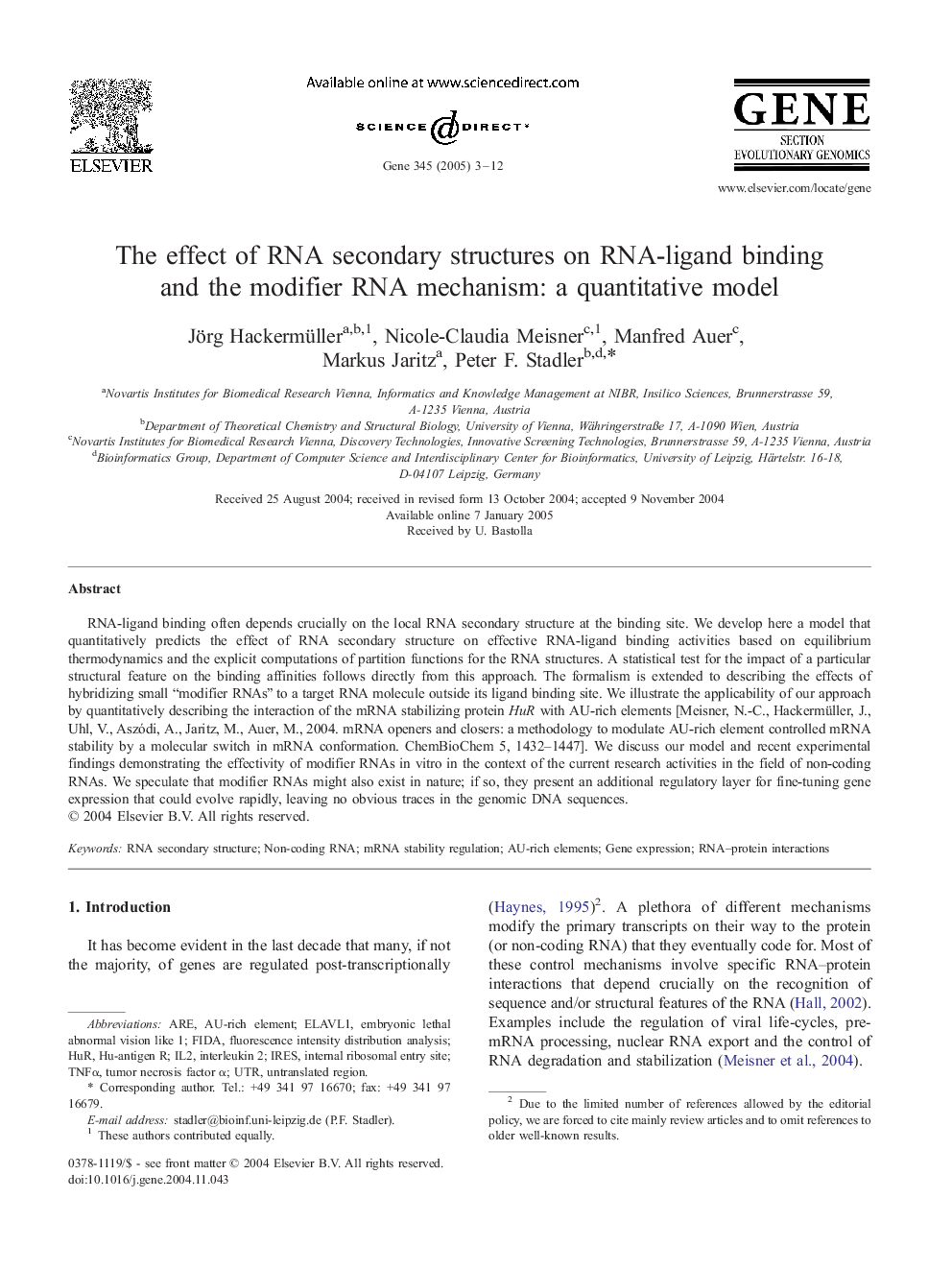| Article ID | Journal | Published Year | Pages | File Type |
|---|---|---|---|---|
| 9127282 | Gene | 2005 | 10 Pages |
Abstract
RNA-ligand binding often depends crucially on the local RNA secondary structure at the binding site. We develop here a model that quantitatively predicts the effect of RNA secondary structure on effective RNA-ligand binding activities based on equilibrium thermodynamics and the explicit computations of partition functions for the RNA structures. A statistical test for the impact of a particular structural feature on the binding affinities follows directly from this approach. The formalism is extended to describing the effects of hybridizing small “modifier RNAs” to a target RNA molecule outside its ligand binding site. We illustrate the applicability of our approach by quantitatively describing the interaction of the mRNA stabilizing protein HuR with AU-rich elements [Meisner, N.-C., Hackermüller, J., Uhl, V., Aszódi, A., Jaritz, M., Auer, M., 2004. mRNA openers and closers: a methodology to modulate AU-rich element controlled mRNA stability by a molecular switch in mRNA conformation. ChemBioChem 5, 1432-1447]. We discuss our model and recent experimental findings demonstrating the effectivity of modifier RNAs in vitro in the context of the current research activities in the field of non-coding RNAs. We speculate that modifier RNAs might also exist in nature; if so, they present an additional regulatory layer for fine-tuning gene expression that could evolve rapidly, leaving no obvious traces in the genomic DNA sequences.
Keywords
Related Topics
Life Sciences
Biochemistry, Genetics and Molecular Biology
Genetics
Authors
Jörg Hackermüller, Nicole-Claudia Meisner, Manfred Auer, Markus Jaritz, Peter F. Stadler,
